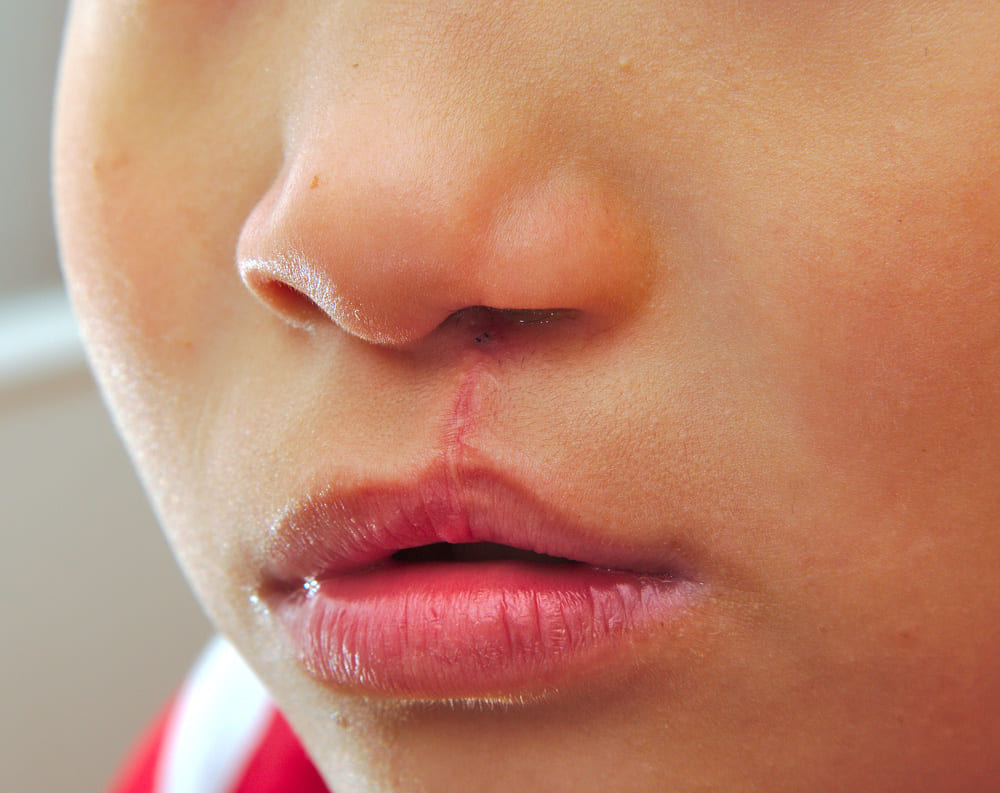You may have heard the term cleft lip or cleft palate but are wondering what it is, exactly. Or perhaps your baby has been born with this condition and you are eager to learn all you can about it.
Babies with a cleft palate will have an opening in the roof of their mouth, while those with a cleft lip will have a hole in between their lip and their nose. Some babies will have either a cleft lip or a cleft palate; occasionally, some will have both.
According to the CDC, in the U.S. around one in every 1,600 babies are born with a cleft lip and cleft palate, one in every 2,800 are born with a cleft lip, and one in every 1,700 are born with a cleft palate.
Why Are Some Babies Born with a Cleft Lip or Palate?
The gap in the roof of a baby’s mouth or in their lip occurs when parts of the face did not fuse together in the womb. Although cleft lip and cleft palate can occur as isolated incidents, they sometimes occur alongside other syndromes or genetic conditions.
Sometimes there is no identifiable cause of cleft lip and palate, but there are some factors that can increase the risk. These can include smoking cigarettes or drinking alcohol during pregnancy, being exposed to chemicals while pregnant, or taking certain medications, such as those used to treat seizures.
What if Your Baby Has a Cleft Lip or Palate?
It can be very upsetting when a baby is born with a cleft lip or palate, but parents should know that the condition can be treated. Surgeons can restore the normal function of the palate and correct the cleft lip, leaving minimal scarring. It does mean though that babies will need to have corrective surgery. Cleft lip is typically done when babies are between three to six months old whereas a cleft palate surgery tends to take place when baby is between six and twelve months old.
Without surgery to correct the problem, your baby could develop some other issues. Babies with cleft palate often suffer hearing problems because they are more susceptible to ear infections such as glue ear. Without surgery, speech problems can also occur.
You might also notice that your baby is struggling to feed with a cleft lip or palate because they are finding it difficult to suckle.
Coping with Surgery
Knowing that your baby is going to need surgery can be very upsetting but because of how common the condition is, surgery to correct it is also very common and considered to be safe. Your baby will not feel any pain as they will be given a general anesthetic. It is likely that the child will stay in hospital for one to two nights.
After the surgery, baby is likely to be on a drip for fluids. There may also be other tubes that provide medication. The good people at CozeeCoo say that keeping baby’s hands away from these tubes and their wound is important and so recommend using a cleft sleep sack, which will help to gently restrain baby’s arms while allowing for free movement of the legs.
When cuddling your baby after surgery, you should make sure that you place them over your shoulder to keep them upright, which will be more comfortable and will reduce any swelling. Stitches will be dissolvable and should disappear after a few weeks, but you should try to keep the area clean with cooled, boiled water until this happens. The cleft sleep sack will help to keep baby’s hands away at night.


